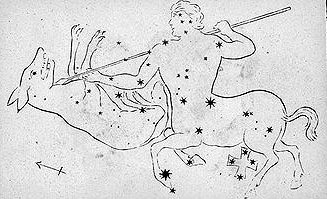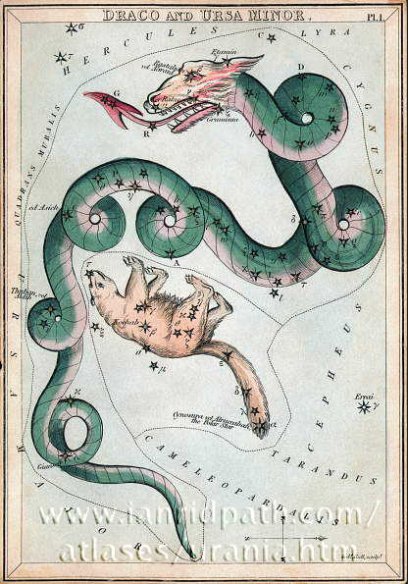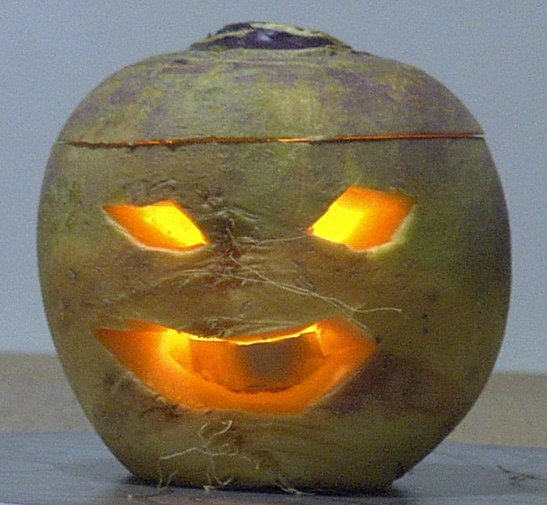| Sirius (407) |
α Canis Maj |
-1.46 |
16° 39′ S |
06h 43m |
102.2 |
| Gienah (495) |
γ Corvi |
-0.94 |
22° 37′ S |
12h 14m |
186.1 |
| Canopus |
α Carinae |
-0.72 |
52° 40′ S |
06h 21m |
96.6 |
| Arcturus (524) |
α Bootis |
-0.05 |
19° 27′ N |
14h 13m |
216.4 |
| Toliman |
α Centauri |
-0.01 |
60° 38′ S |
14h 36m |
222.2 |
| Vega (589) |
α Lyrae |
0.03 |
38° 44′ N |
18h 35m |
282.8 |
|
Capella |
α Aurigae |
0.08 |
45° 57′ N |
05h 13m |
79.4 |
|
Rigel |
β Orionis |
0.18 |
08° 15′ S |
05h 12m |
79.1 |
|
Procyon (420) |
α Canis Min |
0.34 |
05° 21′ N |
07h 37m |
115.9 |
| Achernar (703) |
α Eridani |
0.45 |
57º 29' S |
01h 36m |
24.3 |
|
Betelgeuze
(394) |
α Orionis |
0.58 |
07° 24′ N |
05h 52m |
89.3 |
| Agena |
β Centauri |
0.61 |
60° 08′ S |
14h 00m |
213.1 |
| Altair (609) |
α Aquilae |
0.76 |
08° 44′ N |
19h 48m |
301.3 |
| Spica |
α Virginis |
0.98 |
10° 54′ S |
13h 23m |
203.7 |
We ought to look ahead in the glyphs from Toliman to Ke Kwan, the 'Cavalry Officers', in May 2:
What could be a better name for a Centaur with a drawn bow fighting the evil dark force? A cavalry officer must be one with his horse.

|
Al Muakhar 10 |
11
(348) |
12 |
|
April 28 |
29 |
30 (120) |
 |
 |
 |
|
Cb1-12 |
Cb1-13 (405) |
Cb1-14 |
| manu rere - kua
rere ga manu - ki te ragi |
eaha te nuku erua |
koia kua huki |
|
no stars listed |
Head of the Fly (39.6),
Kaffaljidhma
(39.8), Angetenar (40.2) |
|
October 29 |
30 |
31 (304) |
|
Auva 9 |
10 |
11
(168) |
| π
Bootis (221.8), ζ Bootis (221.9), 31 Bootis (222.0), Yang Mun
(222.1), Rijl al Awwa (222.5) |
ο
Bootis (222.9), Izar (223.0), 109 Virginis (223.3) |
Zuben
Elgenubi (224.2), ξ Bootis, ο Lupi (224.5) |
|
Al Muakhar 13 (350) |
Alrescha 1 |
2 |
|
May 1 (121) |
2 |
3 |
 |
 |
 |
|
Cb1-15 |
Cb1-16 |
Cb1-17 (409) |
|
e niu tu |
ki te ariki - e
ka hua ra tona rima |
koia kua iri i
ruga o te rima - e o to vaha mea |
|
Bharani-2 /
Stomach-17 |
τ² Eridani (41.7) |
no star listed |
|
Right Wing (40.9),
Bharani (41.4) |
|
November 1 (305) |
2 |
3 |
|
Auva 12 |
13 (170) |
Simak 1 |
|
Kochab (225.0) |
Ke Kwan (226.3), Ke
Kwan (226.4) |
Zuben Elakribi (226.8), ω Bootis (227.2), Nekkar (227.3) |
From Sirius to Toliman there were precisely 120 days (221.2 - 181.2 = 120.0) and from January 1 to May 1 there were also 120 days (I am writing in past tense in order to present the rongorongo view):
| ARIES: |
| 1 |
Ashvini |
β and γ Arietis |
Horse's head |
27 = 8 + 9 |
| wife of the Ashvins |
Sheratan and Mesarthim |
April 17 (107) |
| 2 |
Bharani |
35, 39, and 41 Arietis |
Yoni, the female organ of reproduction |
41 = 27 + 14 |
| the bearer |
Musca Borealis |
May 1 (121) |
The star Bharani (41 Arietis) has the fraction 0.4 and it came 14 days after Sheratan:
| 0 |
- |
Zero |
η Andromedae |
11.4 |
April 1 (91) |
- |
0 |
| 1 |
Al Sharatain |
Pair of Signs |
β Arietis (Sheratan), γ (Mesarthim) |
27.4 |
April 17 (107) |
16 |
16 |
| |
|
Musca Borealis |
35 (Head of the Fly), 39 (Kaffaljidhma), and 41 Arietis (Bharani) |
41.4 |
May 1 (121) |
14 |
30 |
| 2 |
Al Dabarān |
Follower |
α Tauri (Aldebaran), θ¹, θ²´, γ (Hyadum I), δ (Hyadum II), ε (Ain) |
63.4 |
May 23 (143) |
36 |
52 |
The curious Chinese notation 4¹ Arietis for the star 41 Arietis (Bharani) probably was meant as a Sign in order to put focus on the RA position which once was at RA day 41 (= 'one more' than 40).
|
14 |
Wall |
γ Pegasi
(Algenib) |
Porcupine |
|
15 |
Legs |
η Andromedae (?) |
Wolf |
|
16 |
Bond |
β Arietis
(Sheratan) |
Dog |
|
17 |
Stomach |
4¹ Arietis (?) |
Pheasant |
In the northern spring the heliacal dates following April 1 meant increasing Sun and in the southern hemisphere the same was true for the nakshatra dates in the April nights. The Arabs north of the equator had a helical system which easily could be adapted to the view from Easter Island by changing it to a nakshatra system. The same manzil calendar was in clear view in the nights close to the Full Moon.
The heliacal dates from Toliman in November meant increasing darkness for the Arabs and the same was true for the Easter Islanders when they in November by using the nakshatra view could see the April asterisms.
The Bharani star was in Cb1-15 possibly depicted as a Niu glyph, but according to my line of investigation we ought instead try to see a connection with Kochab (β Ursae Minoris).
Yes, I was probably right I immediately could find out:
"Kochab is from the Arabic title that it shared with α; and it perhaps was this star that the Greek astronomers called Πόλος, for it was near the pole 1000 years before our era." (Allen)

What better opposite star for Bahrani (yoni) than the greatest 'staff' (linga) of all?

Probably the male Pole star constellation where Polaris stood firm and tall, with Kochab as a Sign of direction (a moving time indicator), once was used in order to find a suitable female 'yoni' constellation. Bharani was found suitable for this role, becasue the star had the right RA fracton, precisely 14 days after Sheratan.
When I once summarized in my preliminary glyph type dictionary my somewhat intuitive ideas regarding Niu it was not far from our new discoveries:
| Niu glyphs are located at the beginning of calendars for the year, but in the middle of 'calendars' for the week.
Once upon a time the solar year began with what now is the 2nd quarter, the season when light grows quickly. It was interpreted as the magic work of a 'watery snake' ('worm', 'eel' etc).
The idea was based on the concept of two 'years' - 'winter' and 'summer' (i.e. 'sea' and 'land'). The 'watery snake' (Rigi, Tuna roa, etc) becomes active around spring equinox and dies at midsummer, having completed the mighty work of lifting up the sky ('upper shell') to let in the light.
According to the model 'sea and land', spring equinox must correspond to the swirling water close to the beach, where only slithery creatures can survive.
Mercury (quick-silver) is the 'watery snake'. The Inuit people, therefore, probably were identifying 'The Entrail Snatcher' with Mercury - entrails are like a heap of worms (or seaweed, or the orbit of Mercury).
Niu means coconut palm, the nut of which is like a human death skull (coco). 'Winter' dies around spring equinox and the dead skull in some mysterious way is necessary to generate the new life. It must be planted in the 'earth' (Hina in the myths about Tuna roa).
We can see the ghostly spokes of the old year at the top of the niu glyph and in the coal sack below imagine the glowing growth of new fire.

(Turnip lantern according to Wikipedia) |








